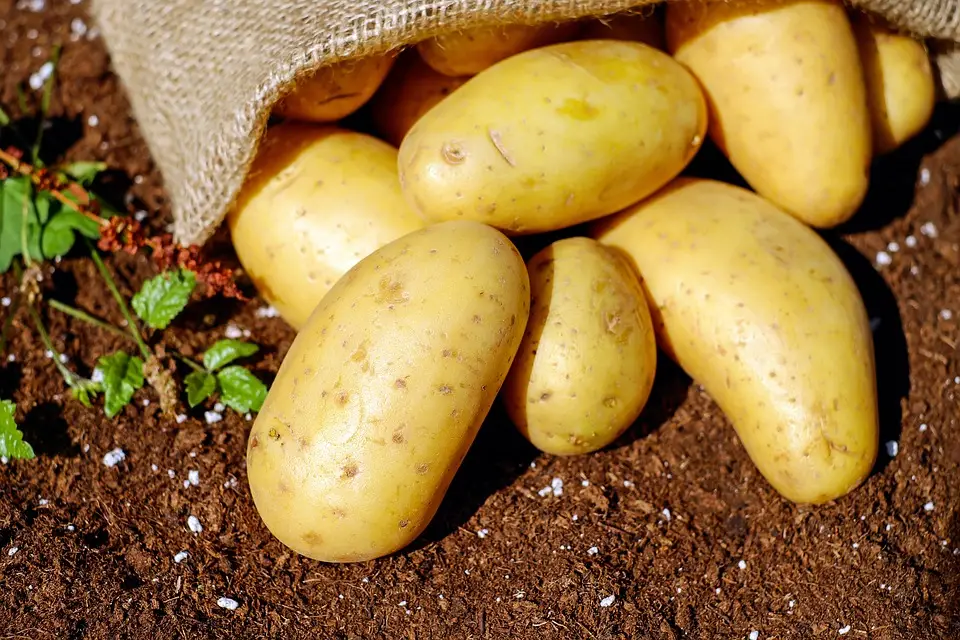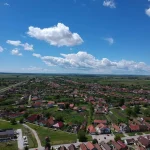Saint Patrick’s Day doesn’t hold particular importance in Croatia, except for the name day that people with a similar name celebrate. However, in Slavonia, this day marks the start of planting the crops that will be available for harvesting, and furthermore, some of those products will be stored for winter. Crops don’t have to necessarily be planted specifically on St. Patrick’s Day but after that date, people hurry to sow their plants before the rain. Why does it need to be done before the rain? For a simple reason – when rain occurs after sowing, the seeds will swell and the beginning of the growth process is in motion.
That is only the “first round” of the planting since not all plant crops can be immediately be planted. These next vegetables are most common in the “first round of planting”.
Potatoes
A useful vegetable that can be used in many ways and because of its flexibility and endurance during its growth, this plant is unavoidable in Slavonia. Potatoes from Lika are one of the most famous Croatian products. When planting, people make rows in their gardens that are approximately 25 centimeters deep and start putting potato tubers with sprouts, one by one, one foot away from each other (you can measure distance with your foot) and later buried with a hoe. Red and white potatoes are the most prominent ones and are planted for different uses – red potatoes are good for frying and roasting, and white ones are for boiling and cooking. People who don’t have big gardens or lands can also plant on their balconies or small spaces indented for planting.
Onion
Onions with potatoes are in the same tier of importance for Slavonians and have mostly the same attributes. Flexibility in its handling in the kitchen and mostly pretty endurable, this crop has many good uses. However, there is a problem that, of course, can be avoided. The danger of rotting is pretty common with this plant (which can be also said for potatoes but in smaller measure) and if not harvested on time, this is an unavoidable problem. Why? Well, when harvested, our ancestors would leave onions on the field to dry but with climate change and far harsher summers, they’re usually put under the canopy or whatever place where the sun isn’t blazing hot. Onions planted in March are usually ready for harvesting in July but even “young” onions are good for use, especially at Easter time.
Carrots and parsley
An indispensable part of any stew or soup, these two plants are really an important part of planting traditions in Slavonia. It is also harvested in July but has multiple uses besides its root. For instance, parsley’s leaves are put in the meals as a spice and it is present in almost every Slavonian meal – čobanac, gulaš, fiš, and many more. Carrots, on the other hand, can be consumed young as onions – roasted young carrots coated in butter equals a great summer meal. One more plant that can be cultivated in small and closed places.
Garlic
This plant has, so to say, a mythic reputation in multiple cultures including Slavonia. From having healing attributes for stomachaches, strengthening immunity, and so on, to flexible uses in the culinary world. If any ingredient symbolizes Slavonia, that’s definitely garlic – spicy, strong smell and certainly a food that enhances every meal. Planting is the same as is with onions – bulbs are put in the ground and just gently covered with soil. A very durable plant that can withstand any weather and be usable all year. It can be cultivated anywhere.
Celery
Its head is mostly used for meals but the culinary internet revolution discovered newfound use for its leaves. They can be put in the pesto, carbonara, or just a sauce ingredient for extra flavor. Celery heads in Slavonia are used as an ingredient for soups and stews like previously mentioned gulaš and paprikaš. It can be stored for later use and its durable ingredient is why this plant is part of cultivating and planting traditions in Slavonia. In recent years, it’s also been used as a juice! Rich with sodium and vitamin A.
Red beet
Also planted in the first round of planting, red beet has multiple uses and is one of the healthiest ingredients on this list. Its juice is used in the fitness world for strengthening a person’s fitness and body. Furthermore, it can lower blood pressure and increase blood flow. Rich with folic acid, manganese, potassium, vitamin C, magnesium, iron and so many more. Its root in Slavonia is used mostly for winter storage, namely, pickled in glass jars. “Soily” taste and beautiful color make this ingredient an important plant in the Slavonian region.
Peas and string beans
These two at first glance seem the same but they’re not. Even though they’re from the same family of plants (legume or pea family), they can be used in different ways. Stews are probably most common in Slavonia for peas but string beans can also be prepared in salads or roasted with other vegetables. Their issue is that they’re really sensitive and require nonstop care. A great ingredient for various meals.
Those vegetables are most commonly planted in the first spring planting, however, a bit later in the spring season, seeds are replaced by seedlings, young plants that have already sprouted from their seeds. These include tomatoes, cabbage, swiss chard, broccoli, peppers, jalapenos, cucumbers, and many more. Cultivating from there needs to be on a higher level since these plants require more care which means more water, fertilizers, and fluids that protect the plants from harmful organisms – parasites. What’s also important to note is the importance of these crops, used and pickled for winter storage. Most common are homemade tomato sauce, pickles, so-called hunting salad, pickled pepper, mild and spicy, and many more.
If we look deeper, planting traditions haven’t changed much in recent decades. Proven methods from our ancestors still work, are even better than the modern ones we encounter today, and still feed generations of people in these areas. Every region in Croatia has its own traditions and that’s what makes Croatia so rich – whenever you go, you can see how Croatian people survived the toughest times and managed to use its resources in the best possible ways. Earth and ground we walk on are still one of the rare things that never let Croatians down and that’s reflected in planting traditions in Slavonia.
For more, check out our dedicated lifestyle section.












